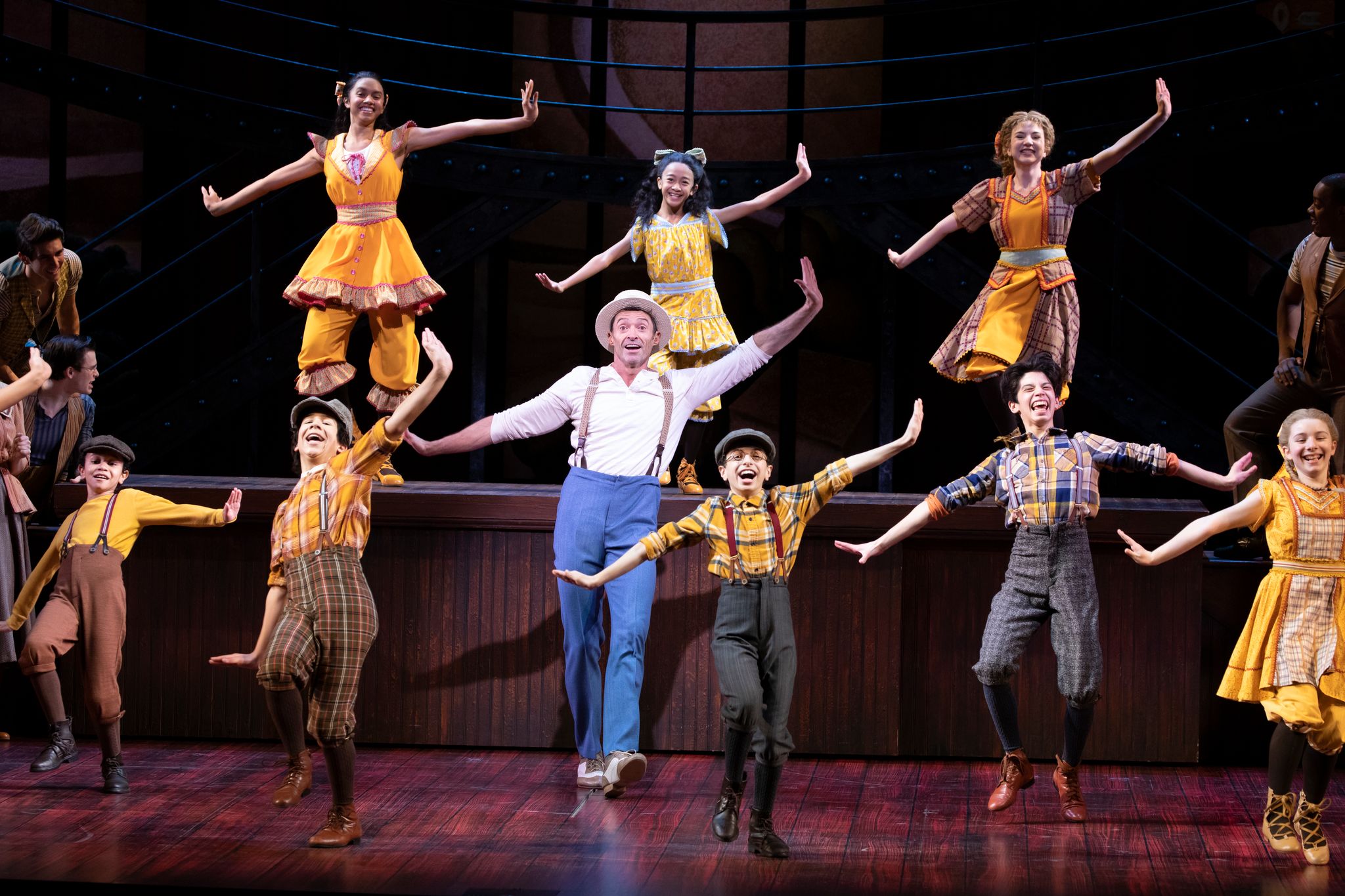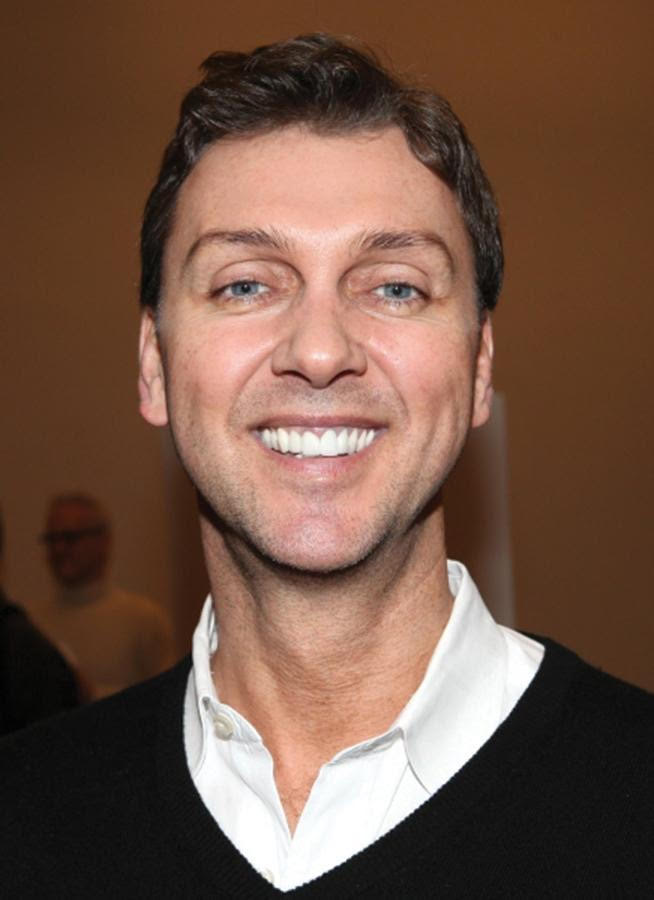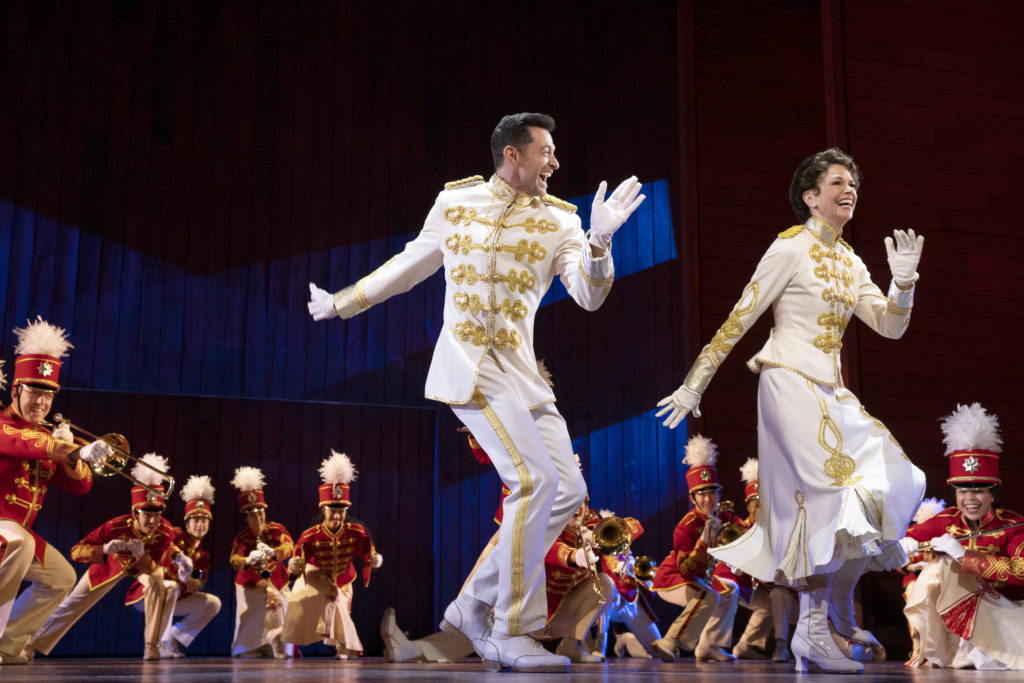
Multi-award-winning Broadway choreographer Warren Carlyle says that he’s always felt connected to music. Before he started dancing around the age of 10, he played the piano, which he says greatly benefited his musicality as a choreographer. Music was also Carlyle’s gateway to dance: “One of my earliest memories was listening to music, and I just imagined people moving.”

He’s since found a home in choreographing some of Broadway’s biggest shows, including The Music Man (2022 revival), Kiss Me Kate (2019 revival), After Midnight, A Christmas Story and Hugh Jackman: Back on Broadway.
Before getting started on creating the choreography for a show, Carlyle reads the script “a lot, a lot, a lot.” “It’s funny when I read the script,” he says. “I look for opportunities where I can insert dance or where dance can further the plot or tell us something more about a character that’s not necessarily on the page.”
When working on the 2019 Broadway revival of Kiss Me, Kate, Carlyle saw an opportunity to add even more dance to the song “Too Darn Hot.” “It basically says on the bottom of that page in the script ‘and then they dance.’ And the dance I created was 9 minutes and 45 seconds long,” he says.
In the scene, Carlyle also found a way to add to the overarching story with women dancing in sweeping, powerful motions, energetic partnering sections and sharp unison sections of the whole company—all while highlighting and playing with the musical score. “If there is part of the choreography that I want to emphasize so that the audience doesn’t miss it, I’ve started to understand that they also have to hear it. It’s like putting a crash on a kick or the other way around.”
When reading the script and listening to the music, Carlyle makes a laundry list of moments he wants to choreograph and the specific instrumentation he wants to choreograph to. This list could include anything from a large men’s section, a solo downstage, or a moment of the full company onstage to parts of the score that he wants the movement and the music to build together.
In The Music Man, Carlyle had three years to build and layer his choreography—a stark difference from the typical few months he usually gets to choreograph. This extra time, he says, “had a profound effect on the work because none of it [the final version] is my first pass. All of those giant numbers currently in The Music Man are the fifth or sixth or even seventh version of themselves.”
The finale of The Music Man, for example, is probably the third or fourth iteration. The first version was nearly 10 minutes long, and it came to be after working closely with the arranger to construct the orchestrations—his original laundry list for the piece included a piccolo section with the smallest members of the cast, a quartet, and many other different dancing groups.

In revising the finale choreography, Carlyle started by gently editing the first version down. Next, he created a completely new version of the number, which he says was a challenge since the music stayed the same, as the orchestration had already been set.
The current version on Broadway, he says, “is the shortest, most concise version. The curtain goes up and Hugh [Jackman] and Sutton [Foster] are there. I just cut to the chase. It’s right for the story we’re telling.”
Being able to work with arrangers on the score also allows Carlyle to precisely control what emotions a scene conveys to the audience. “I love being able to story tell with music,” he says, explaining: “You put the right piece of music underneath the action and it tells you everything you need to know [as an audience member]. You could be playing a love scene, but if the music is telling you there’s trouble, then that’s the emotion that the audience feels.”

Being able to work with a cast of nearly 50 performers for The Music Man was a dream come true for Carlyle. Of course, setting movement on so many performers is no small feat. To get the cast to hear his musicality, Carlyle says he often “sings for them, and sings at them.” Though he wants the dancers to hear how he interprets the music, he also loves when a dancer can bring their originality and personality to the role and directs his dancers to home in on the story with their character. During clean-up rehearsals, especially, he doesn’t want robots: “I want the choreography clean, but I don’t want to clean the character out of it. I might like that a dancer feels the music slightly differently than I feel it. I’m always open to that collaboration because musicality takes all kinds of shapes and forms,” he says.
The playlist below highlights some of Carlyle’s musical dance numbers, which you can use as inspiration for your musical theater classes, to challenge your jazz dancers to act or to spice up your normal class routines.
“Too Darn Hot,” Kiss Me, Kate (2019 Broadway Cast Recording)
In this number, Carlyle had a large cast of dancers express the story through partnering sections and moments of unison. Try out some partnering choreography with your students in class so that they can experience what it’s like dancing with another dancer.
“Seventy-Six Trombones,” The Music Man (2022 Revival)
While choreographing this piece, Carlyle created a laundry list of instrumentation: “I wrote piccolos because I knew I wanted to start small at the end of the song. So I started with the smallest little peanut children of the cast. After that I wrote clarinets, followed by tuba, followed by cymbal and trumpets, followed by trombones, followed by flutes, etc.” Taking inspiration from Carlyle, create multiple canons or different variations of choreography to line up with the instruments in the track.
“Who’s That Woman?,” Follies: New Broadway Cast Recording
This song is known for its big tap break towards the end. Try choreographing a tap combo to the tap break over the recorded tap sounds, or explore the classic golden-age-jazz choreography in many other places in the song.
“Cotton Club Stomp,” Duke Ellington
One of Ellington’s tracks that inspired the Broadway show After Midnight, this song can be used to teach a 1920s Charleston-inspired combo or a small history lesson about dances from this time period.





